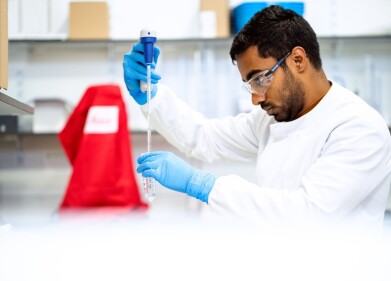Thin Layer Chromatography (TLC)
Searching for Drugs in Culinary Herbs with the Help of Chromatography
Jul 03 2020
Scientists in Russia and Australia have developed a method of detecting and identifying bioactive compounds in complex samples such as plant extracts. The method uses high-performance thin layer chromatography and bioassay techniques to rapidly examine a variety of compounds, find mixtures that have properties that are desirable and then isolate the substances that are of greatest interest. The researchers applied the method to examine Mediterranean and Australian native culinary herbs. The teams hope that the new method, which is fact and cost-effective, will be useful for finding new drug compounds. Let’s take a closer look.
Herbs and the effect directed approach
People have been using plants and herbs as food stuffs and medicines for thousands of years. It is known that plant extracts contain hundreds of different compounds, with many of them potentially useful as new drugs or starting points for drug synthesis. Usually, only known compounds in the plant were analysed using a targeted approach. But this left potentially hundreds of bioactive compounds undiscovered. So, a method that can both screen the mixtures of molecules and identify which ones might be bioactive could be of significant value in the search for new drugs.
The researchers from Russia and Australia used an approach known as effect-directed analysis (EDA) which has been widely used in environmental analysis of toxic contaminants. EDA is a technique that aims to identify the causative agents responsible for a specific response by reducing the complexity of the sample. In the case of looking for bioactive compoaunds in herbs, this involves the separation of a complex mix of plant compounds and seeing which of them cause a reaction, for example the inhibition of an enzyme or action of reactive oxygen species.
Just a little HPTLC needed
The authors used a combination of chromatographic separation with bioassays and physico-chemical characterisation to discover and identify bioactive compounds in the plant samples. The use of chromatographic analysis on samples from nature is discussed in the article, Determination of Nitrite, Bromide and Nitrate in Seawater Using Ion Chromatography. The team used a combination of high performance thin-layer chromatography (HPTLC) with microbial (bacteria and yeast) tests and biochemical (enzyme) bioassays to enable the rapid and reliable characterisation of compounds directly on the chromatographic plates.
The teams involved examined Mediterranean and Australian culinary herbs such as basil, rosemary, sage, sea parsley and saltbush. They found that some of the secondary metabolites from these plants exhibited significant antioxidant activity and enzyme inhibition. They suggest that the herbs might be preventative against cardiovascular diseases and type- diabetes. In a press release they suggest that the fast and effective EDA method will be useful in finding new drug compounds.
Events
Jan 20 2025 Amsterdam, Netherlands
Feb 03 2025 Dubai, UAE
Feb 05 2025 Guangzhou, China
Mar 01 2025 Boston, MA, USA
Mar 04 2025 Berlin, Germany














